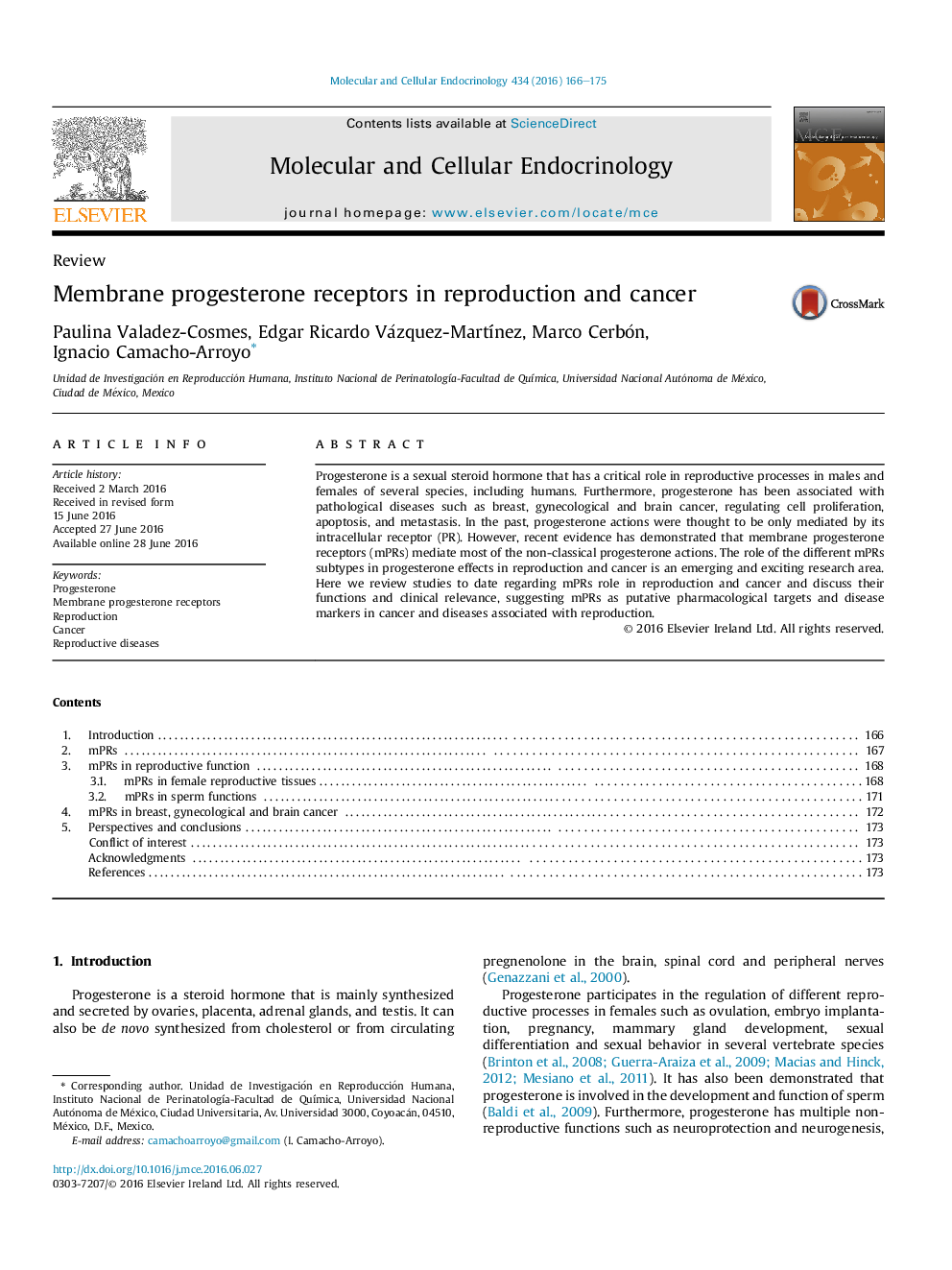| کد مقاله | کد نشریه | سال انتشار | مقاله انگلیسی | نسخه تمام متن |
|---|---|---|---|---|
| 2195489 | 1550845 | 2016 | 10 صفحه PDF | دانلود رایگان |
کلمات کلیدی
1.مقدمه
2. گیرندههای پروژسترون غشایی (mPRs) 167
3. نقش mPRs در عملکرد سیستم تولید مثل
1.3. نقش mPRs در بافتهای تولید مثل زنانه
2.3. نقش mPRs در عملکرد اسپرم
۴. نقش mPRs در سرطان پستان، بیماریهای زنان و سرطان مغز
5. چشم اندازها و نتیجه گیریها
تضاد منافع
تقدیر و تشکر
• Progesterone regulates several biological processes via mPRs.
• mPRs members exert different actions in reproduction and cancer.
• mPRs regulate oocyte maturation, labor, and sperm motility.
• mPRs regulate apoptosis, proliferation, metastasis, cancer stem cells maintenance.
• mPRs could be pharmacological targets in reproductive diseases and cancer.
Progesterone is a sexual steroid hormone that has a critical role in reproductive processes in males and females of several species, including humans. Furthermore, progesterone has been associated with pathological diseases such as breast, gynecological and brain cancer, regulating cell proliferation, apoptosis, and metastasis. In the past, progesterone actions were thought to be only mediated by its intracellular receptor (PR). However, recent evidence has demonstrated that membrane progesterone receptors (mPRs) mediate most of the non-classical progesterone actions. The role of the different mPRs subtypes in progesterone effects in reproduction and cancer is an emerging and exciting research area. Here we review studies to date regarding mPRs role in reproduction and cancer and discuss their functions and clinical relevance, suggesting mPRs as putative pharmacological targets and disease markers in cancer and diseases associated with reproduction.
Journal: Molecular and Cellular Endocrinology - Volume 434, 15 October 2016, Pages 166–175
